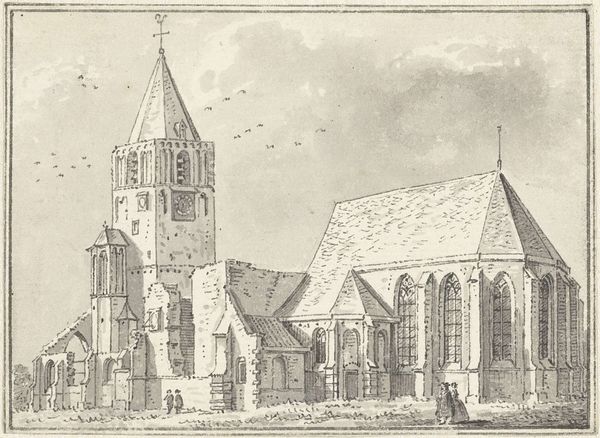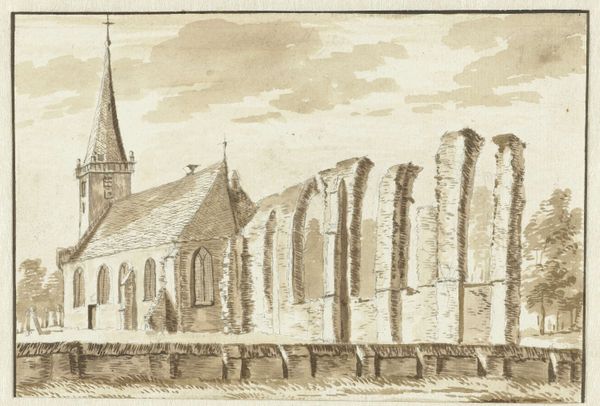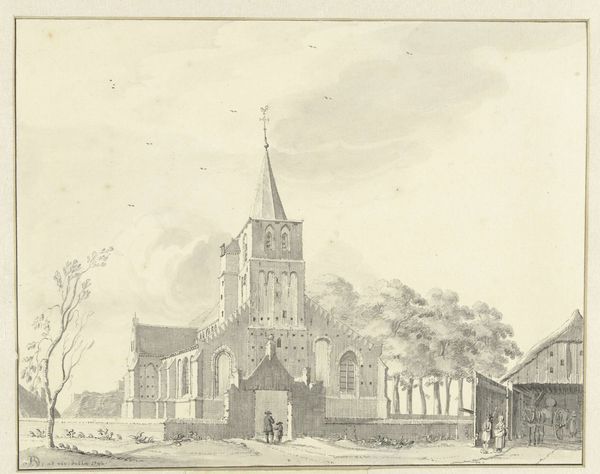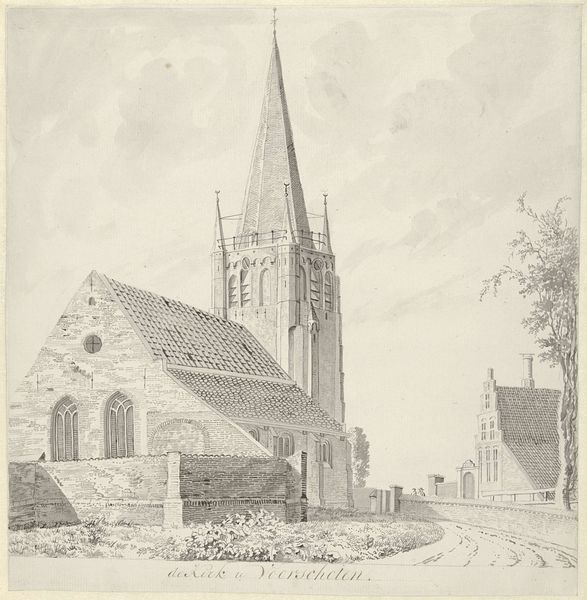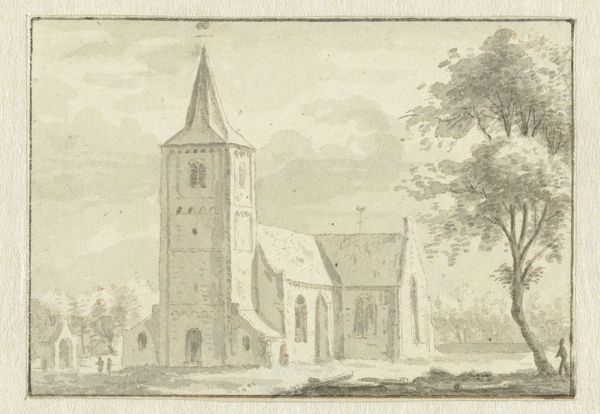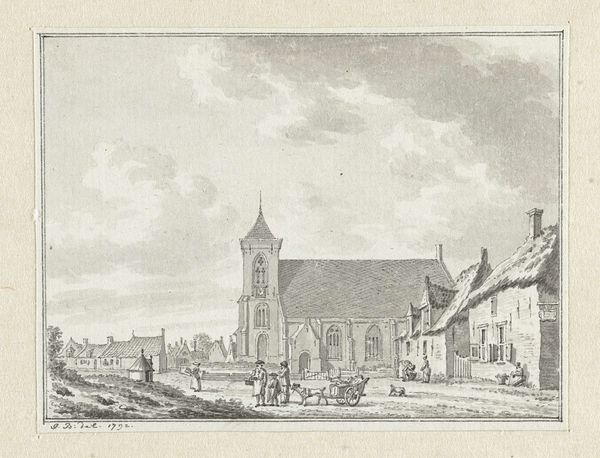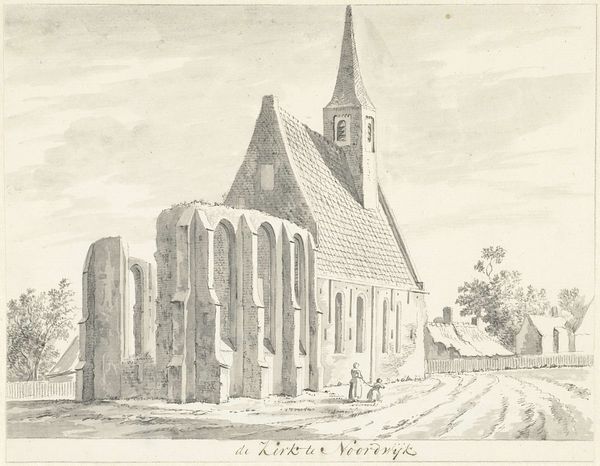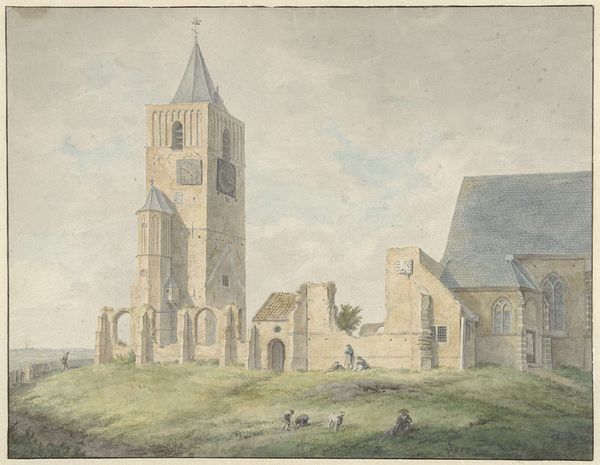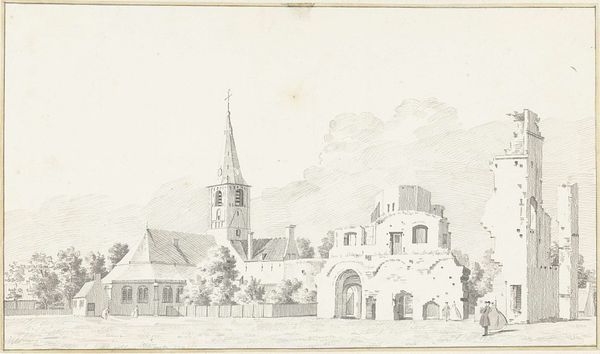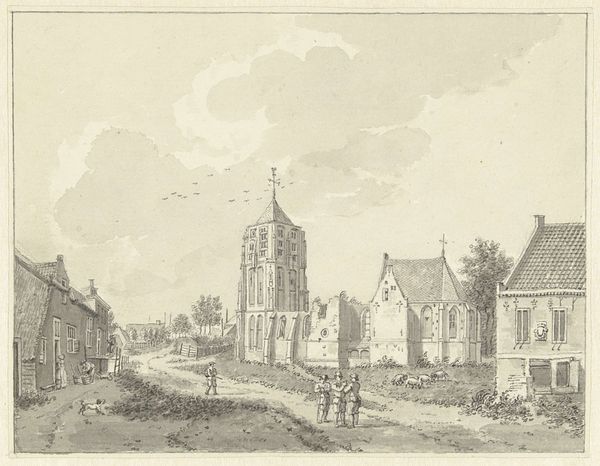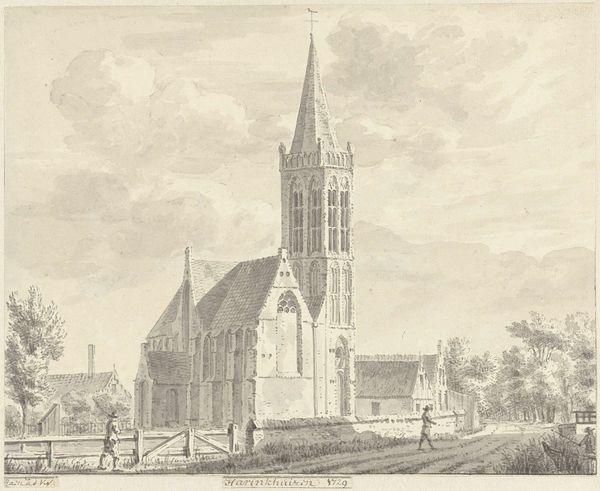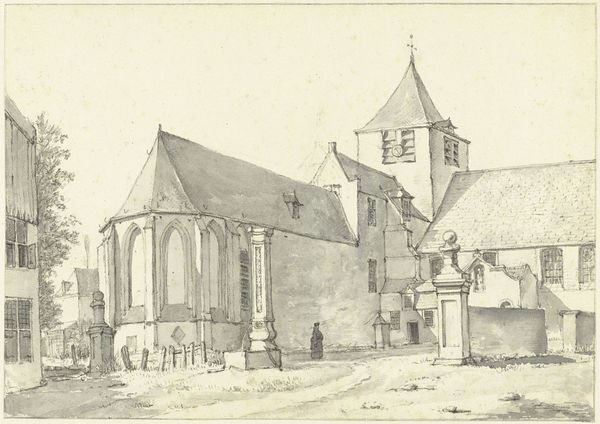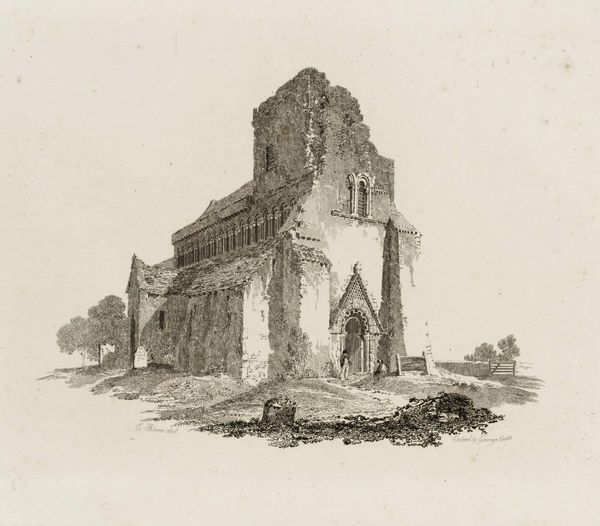
drawing, paper, ink, pencil, architecture
#
architectural sketch
#
drawing
#
amateur sketch
#
neoclacissism
#
light pencil work
#
quirky sketch
#
pencil sketch
#
old engraving style
#
landscape
#
paper
#
personal sketchbook
#
ink
#
sketchwork
#
pen-ink sketch
#
pencil
#
architecture
#
initial sketch
Dimensions: height 232 mm, width 288 mm
Copyright: Rijks Museum: Open Domain
Curator: This drawing, “Kerk te Warmond en de ruïne daarvan,” by Hendrik Tavenier, completed in 1783, depicts a church and its ruins with delicate lines of pencil and ink. What are your first impressions? Editor: I’m immediately struck by the contrast between the solid, standing structure on the right, with its intact roof, and the skeletal remains of the tower on the left. It’s as though time itself is visibly eroding faith. Curator: Indeed, Tavenier masterfully employs light and shadow to emphasize the distinction. Note how the intact portion is shaded with closely placed parallel strokes, giving it volume, while the ruined area is suggested with lighter, broken lines. The steeple of the church looms above like an aspiration, but below its base crumbles, it cannot hold firm forever. Editor: Churches as containers of cultural memory were powerful symbols in the late 18th century; their architecture conveyed a tangible link with historical narrative. To see one depicted in partial ruin speaks to an era grappling with loss. Is this a commentary on the crumbling of religious or perhaps social structures? Curator: It certainly hints at that possibility, but also represents shifts in art and cultural value in the face of Neoclassicism, which looked back to a perhaps idealised moment, but whose architectural sketches and landscapes depicted a certain present moment—which in turn would be superseded, abandoned. Editor: It makes me think of memento mori paintings—skulls and withered flowers—reminding us of mortality. Here, stone and mortar serve the same purpose. Yet, Tavenier hasn't just captured decay, but has imbued this image with a kind of serene beauty; the marks of hand making show the viewer something solid but only provisional. Curator: Agreed. The composition guides the eye vertically—the gaze begins at the base and moves up towards the towering steeple, then dissipates into the wispy sky. The perspective subtly invites the viewer into a silent contemplation on enduring history. Editor: It feels strangely complete as it is. I am intrigued by this idea of capturing things which may only endure for a time—this provisional feeling feels vital. Curator: Perhaps that fleeting sensation is Tavenier's quiet success with this piece, making this humble image into something potent and worthy of prolonged consideration.
Comments
No comments
Be the first to comment and join the conversation on the ultimate creative platform.
